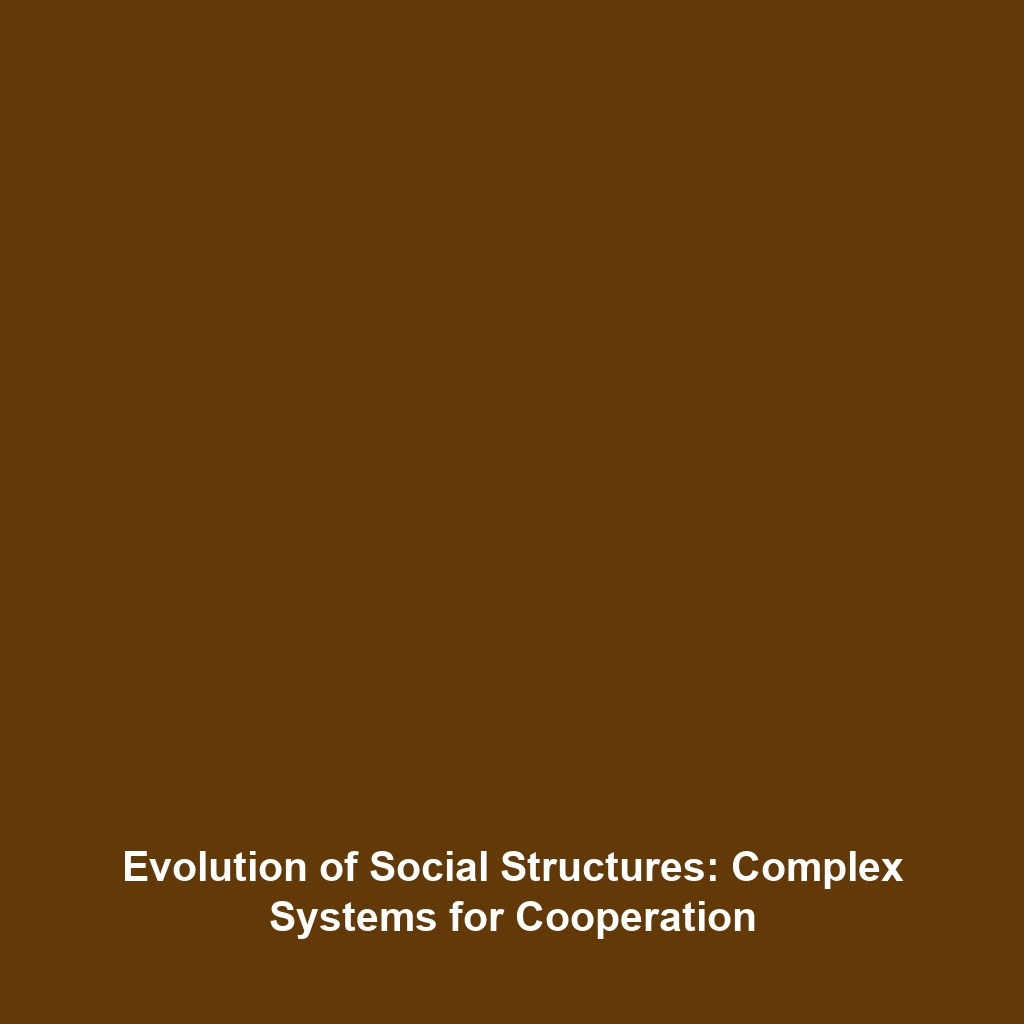Social Structures: The Evolution of Complex Systems in Human Cooperation
Introduction
Social structures have long been a pivotal element in the narrative of human evolution. As societies transitioned from small, kin-based groups to increasingly complex social and political systems, the ability to cooperate on larger scales became fundamental for survival and progress. This transformation not only facilitated resource sharing but also fostered innovation, cultural development, and societal stability. Understanding how these intricate social dynamics shaped our evolutionary path sheds light on the collective journey of humanity.
Key Concepts
The study of social structures within the framework of human evolution encompasses several key principles. These include:
- Kinship and Alliances: Early human societies relied on kinship ties to establish trust and cooperation.
- Political Organization: The emergence of leadership roles and governance systems allowed for greater coordination among larger groups.
- Resource Management: Complex social structures enabled better allocation and management of resources, crucial for communal survival.
- Cultural Exchange: As societies grew and interacted, cultural practices and technologies were shared, enhancing collective knowledge.
Applications and Real-World Uses
The application of increasingly complex social and political systems is evident in modern society. Examples include:
- Government and Law: Formal political structures govern behavior and maintain order, reflecting evolved social norms.
- Community Building: Understanding social dynamics aids in fostering community cooperation and civic engagement.
- Conflict Resolution: Mechanisms of negotiation and diplomacy evolve from historical practices of alliance-building.
These applications illustrate how ancient social structures inform contemporary governance and communal relations.
Current Challenges
Despite the progress, several challenges persist in studying and applying social structures in the context of human evolution:
- Understanding the nuances of historical social systems without imposing modern interpretations.
- Difficulties in obtaining archeological evidence from ancient societies for comprehensive analysis.
- The challenge of integrating diverse cultural perspectives and their historical contexts into a unified theory.
Future Research and Innovations
Upcoming research efforts are set to explore the intricate connections between social structures and human evolution further. Innovations in fields such as genetics, anthropology, and computational modeling stand to offer new insights. Potential breakthroughs may include:
- Advanced genetic analysis techniques to understand the migration and intermixing of ancient human groups.
- Utilization of big data to model socio-political structures and predict societal outcomes based on historical patterns.
- Interdisciplinary approaches combining sociology, archaeology, and evolutionary biology to create a holistic understanding of human cooperation.
Conclusion
In conclusion, the evolution of complex social and political systems has been instrumental in shaping human cooperation and social dynamics. These structures not only reflect our past but also inform our present and future interactions. As we continue to explore these themes, it becomes evident that understanding our evolution provides invaluable insights into contemporary societal challenges.
For further exploration of human evolution and its many facets, consider reading more on related topics that delve deeper into our shared history.

Leave a Reply